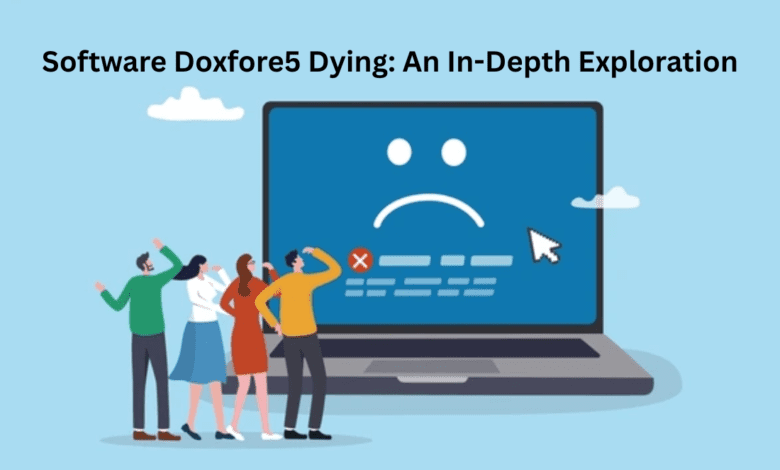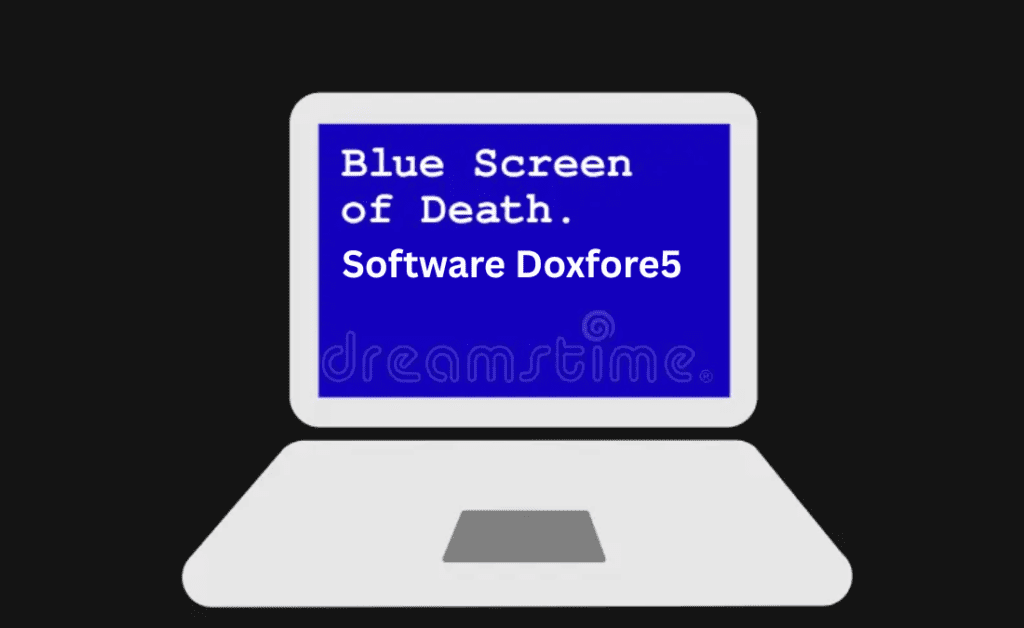Software Doxfore5 Dying: An In-Depth Exploration

Introduction to Software Doxfore5 Dying
The phrase software doxfore5 dying has recently appeared in discussions within the technology and digital communities. While it may sound unusual at first, the phrase encapsulates a broader theme: the decline, discontinuation, or fading relevance of a specific software or platform known as Doxfore5. As with many programs that once served an important role, the idea of “dying” refers not only to its technical end-of-life status but also to its cultural, business, and technological significance.
This article will explore the meaning of software doxfore5 dying, the history of such software, reasons why it might be declining, and what lessons both businesses and users can learn from it.
The Origins of Software Doxfore5 Dying
To understand the concept of software doxfore5 dying, we must first look at what Doxfore5 might represent. In many industries, software tools are created to fulfill specific tasks, such as document management, digital security, or workflow automation. Doxfore5 appears to have been one such tool—specialized, niche-focused, and initially adopted by certain professional groups.
Like many niche platforms, Doxfore5 likely rose to prominence due to its unique features. However, as the phrase software doxfore5 dying suggests, its influence and user base have significantly declined over time. This is a common phenomenon in the tech industry, where even well-designed tools eventually face obsolescence.
Why is Software Doxfore5 Dying?
There are multiple reasons why the idea of software doxfore5 dying resonates with tech users today. These reasons align with patterns that affect many digital tools and platforms:
1. Technological Advancements
Newer technologies and cloud-based solutions often replace older software. If Doxfore5 was not updated regularly, it may have become outdated, leading to its decline.
2. Lack of Updates and Support
Users often abandon software that no longer receives security patches, bug fixes, or feature updates. Software doxfore5 dying could directly reflect a lack of ongoing support.
3. Market Competition
The tech landscape is highly competitive. If stronger competitors entered the same market segment, Doxfore5 may have lost its user base.
4. Changing User Needs
As businesses and individuals evolve, their digital requirements change. Software doxfore5 dying could symbolize the fact that Doxfore5 failed to adapt to modern workflows, integrations, or user expectations.
5. Business Decisions
Sometimes, companies themselves phase out products to shift resources elsewhere. If the creators of Doxfore5 chose to discontinue it, the decline would be inevitable.
The Impact of Software Doxfore5 Dying on Users
When people talk about software doxfore5 dying, they are often expressing frustration, nostalgia, or concern about losing a once-useful tool. The impact of this decline is multifaceted:
- Productivity Loss: Users who relied on Doxfore5 may face disruption as they search for alternatives.
- Data Migration Challenges: Moving data from a dying software platform to a new one can be time-consuming and risky.
- Learning Curve: Transitioning to unfamiliar tools requires training and adaptation, which slows down efficiency.
- Security Risks: If Doxfore5 no longer receives updates, users who continue to rely on it may face vulnerabilities.
Thus, the software doxfore5 dying phenomenon highlights the broader challenges associated with digital dependency.
Case Studies of Similar Software Declines
The idea of software doxfore5 dying is not unique. The tech industry has many examples of once-popular platforms fading into obscurity:
- Adobe Flash Player: Once a cornerstone of multimedia content online, Flash was officially discontinued due to security issues and the rise of modern web standards.
- Winamp: A beloved music player from the late 1990s, it failed to keep pace with streaming platforms like Spotify.
- Google Reader: A popular RSS feed reader, discontinued due to changing user habits and business priorities.
These cases illustrate how software doxfore5 dying fits into a larger narrative of technological evolution.

Lessons Learned from Software Doxfore5 Dying
There are several key lessons that users, developers, and businesses can draw from the decline of Doxfore5:
1. Adaptation is Key
Software must evolve to remain relevant. Regular updates and responsiveness to user feedback are essential.
2. Backup and Migration Planning
Users should always plan for the possibility of software decline. Having migration strategies reduces risks when software doxfore5 dying becomes a reality.
3. Avoid Over-Dependency
Relying too heavily on a single tool increases vulnerability. Diversifying one’s tech ecosystem creates resilience.
4. Community and Ecosystem Value
Software with strong communities often outlast those without. If Doxfore5 lacked a supportive ecosystem, it may explain why software doxfore5 dying became inevitable.
Possible Alternatives to Software Doxfore5
For users affected by software doxfore5 dying, seeking alternatives is a natural step. Depending on what Doxfore5 originally offered, these alternatives may include:
- Cloud-Based Platforms: Modern solutions that provide scalability and ongoing support.
- Open-Source Tools: Community-driven platforms that evolve with user contributions.
- AI-Powered Solutions: Many new tools integrate artificial intelligence to enhance efficiency.
- Cross-Platform Software: Applications that work seamlessly across desktop, mobile, and web.
The key takeaway is that while software doxfore5 dying signals the end of one tool, it also opens opportunities for innovation.
The Symbolism Behind Software Doxfore5 Dying
On a deeper level, the phrase software doxfore5 dying symbolizes the transient nature of digital technology. No matter how powerful a platform may seem, its relevance is often temporary. This mirrors broader truths about progress: innovation is constant, and users must remain adaptable.
It also reflects emotional attachment. Many people form connections with their favorite tools, and the decline of software like Doxfore5 often feels like losing an old companion.
Future Outlook After Software Doxfore5 Dying
Looking forward, the decline of Doxfore5 can inspire both users and developers to embrace better practices. Developers must focus on long-term sustainability, user engagement, and future-ready design. Users, meanwhile, must prioritize flexibility, regular updates, and ongoing education in new digital tools.
Thus, software doxfore5 dying is not just about the end of one program but also about preparing for the next wave of digital innovation.
Conclusion: Understanding Software Doxfore5 Dying
In conclusion, the phenomenon of software doxfore5 dying illustrates a recurring theme in the world of technology: change is inevitable. Whether due to outdated technology, lack of updates, or stronger competition, the decline of software platforms is a natural part of the digital lifecycle.
For users, it means adapting to change, exploring new alternatives, and protecting their workflows against disruption. For developers, it emphasizes the importance of evolution, user focus, and long-term support.
Ultimately, software doxfore5 dying is both an ending and a beginning—an opportunity to learn from the past and embrace the future of software innovation.